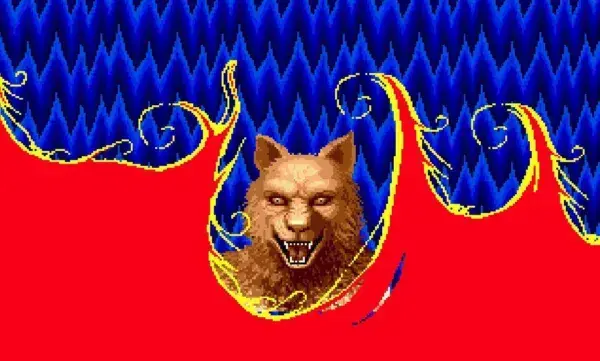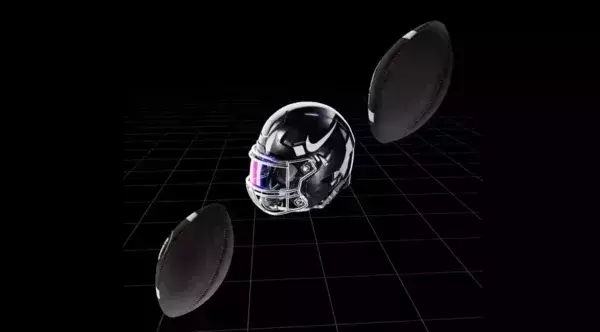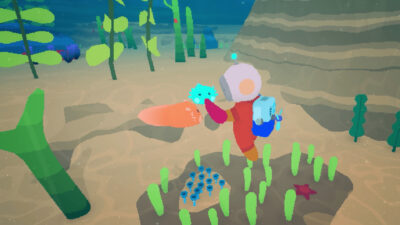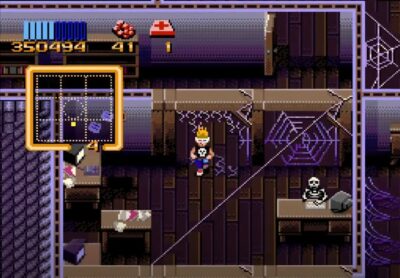
Firesprite Games’ Ellen Shelley on how she became a Senior Lighting Artist, the importance of using light to set atmosphere and how to avoid creative exhaustion.
What was the game that made you first want to work in games?
It was Spyro: Year of the Dragon that sent me down the path of game development. My first console was the PSone, and my first game was Spyro – as this was the natural order of things. Seven-year-old me thought it was incredible that you could play as a little purple dragon that also skateboards. I doubt there’s a single game that wouldn’t benefit from having more tenacious dragons in them.
I’d be doing this article a disservice if I didn’t mention my favourite game of all time, Halo 3. Some of my best gaming memories involve battling it out with my Xbox Live mates. The art style and world-building were so distinctive. I can still recall every detail and gun spawn point on the Halo maps, Valhalla and Sandtrap – especially where the snipers are.
How did you break into the industry?
My journey started as a digital marketing associate in a Brighton architecture practice. VR was a new technology at the time, and they were keen to use it as a marketing tool. Knowing I had an interest in game development, I helped them develop a small VR experience for their project. I built a 3D interior that was playable inside Unreal Engine 4 and viewed through the Oculus headset.

“People often tell me my smile puts them at ease.” Credit: Firesprite Games.
Alongside developing VR experiences for the architects, I applied the same skills to make a handful of Unreal Engine fantasy environments. This focused portfolio of personal work combined with my VR knowledge led to my first industry job at PlayStation’s London Studio as a 3D outsource artist.
What was the first commercially released game you worked on? Are you still proud
of it?
The PSVR title Blood & Truth was my first commercially released game as part of London Studio. I’m still immensely proud of the title as it was the first game I worked on in industry. It was also a game that really pushed the quality bar of VR and set a benchmark for experiences it could deliver. Being a part of that process was exciting, and I learned a great deal during my time there.
What’s the chief responsibility of a lighting artist, and how do you achieve it?
Lighting artists are responsible for implementing the overall mood and tone of a game through colour and light. Our creative process is driven by art direction when lighting game environments, characters, or cutscenes. Lighting encompasses a variety of tools to achieve mood and depth – anything from 3D light fixtures, complete with real-world light bulbs, to fully functioning weather systems. As lighting artists, we are also responsible for technical elements such as setting camera exposure, lighting gameplay, and maintaining the target frame rate alongside other disciplines.
In your opinion, why is lighting crucial to making a game look good or bad?
Mood and atmosphere is usually the first thing a player will experience when playing a game. It can leave the biggest emotional impact, so it’s crucial to get it right. Using the right balance of colour, intensity, and atmosphere, lighting helps to evoke emotions to the player in all areas of the game, especially in story-driven moments. It’s a powerful tool used to define the genre and set the tone that players will remember.

Okay, which one of you left the gas on? Credit: Firesprite Games.
Lighting is also crucial on the technical side. In modern games, good lighting and 3D shaders go hand in hand. This is due to PBR (Physically Based Rendering), the concept of using shaders that respond to light as we see it in the real world. Lighting plays a vital role in bringing all these models and shaders together to look real, where it becomes obvious if something isn’t set correctly for PBR, giving it that ‘off’ look. Broken lighting will quickly break the player’s immersion.
What’s a mistake you made early on in your career but learned from?
The earliest mistake I remember resulted from rushing under pressure. I was working late on a deadline and submitted a shiny new, human-sized sci-fi drop pod for the game. Next morning, there was a company-wide email about drop pods the size of meteors raining hell down upon the world. It’s safe to say junior Ellen learned her lesson from that.
What piece of advice would you give to your younger self?
As a young artist you have so much passion and seemingly endless enthusiasm, both of which contribute to you feeling invincible with the amount of work you can produce. But without proper pacing or rest, it can
lead to burnout. Taking breaks and paying close attention to the signs of exhaustion and stress are vital skills needed for making games long term. Game development is a marathon, not a sprint!

These Abba music videos are scarier than we’d remembered. Credit: Firesprite Games.
Would you say it’s easier to work in the games industry today?
Although it is still very competitive, the industry is a lot more open. When I started out, I was the only woman I knew pursuing a career in games. Nowadays, I see so much support for women and minorities to get into the industry. This kind of support is incredible, and it’s only gaining momentum. From my personal experience, a university degree isn’t required. A strong portfolio and targeted online learning can seriously bolster your chances of landing your first job.
If somebody’s thinking about a career in games, what can they do now to help their future prospects?
Making games requires a variety of disciplines, so it’s good to get familiar with the roles and see which ones may interest you the most. Once you’ve found an interest, you can really drill down and tailor your learning to that specific role. Most art roles require a portfolio, and I can’t emphasise enough how far you can go with a killer portfolio.





